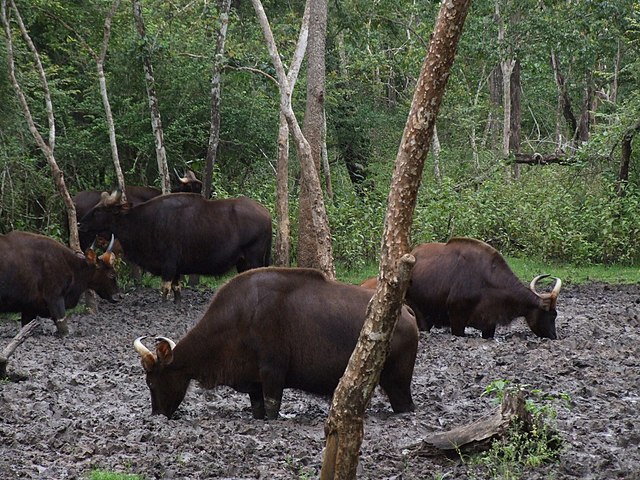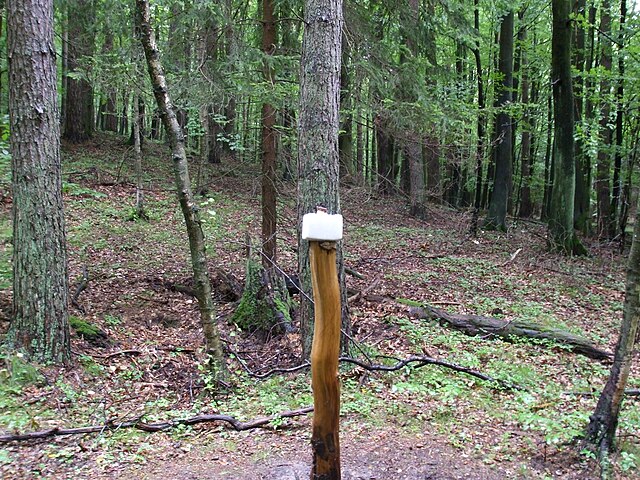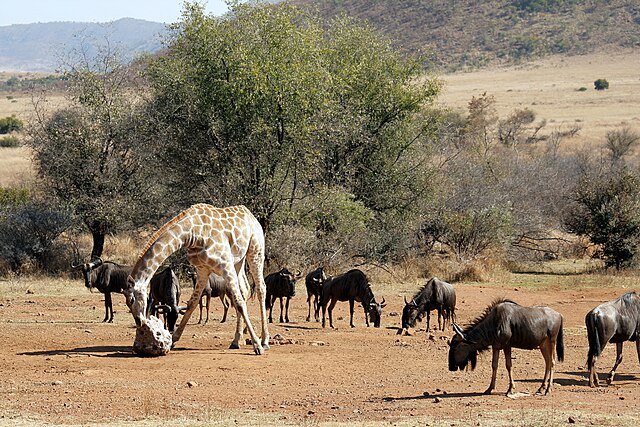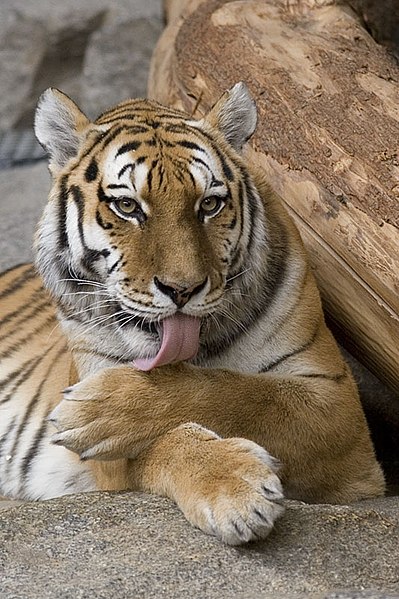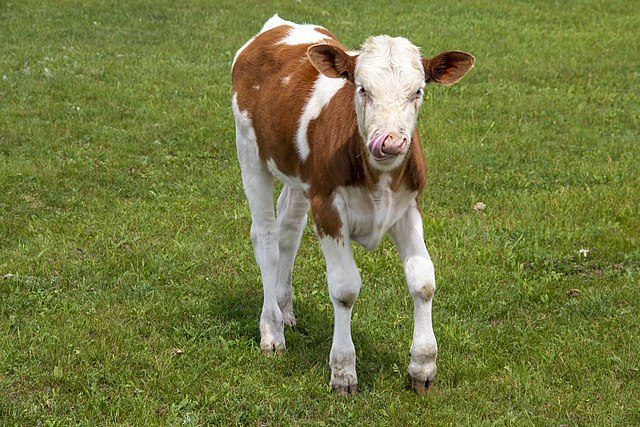A mineral lick is a place where animals can go to lick essential mineral nutrients from a deposit of salts and other minerals. Mineral licks can be naturally occurring or artificial. Natural licks are common, and they provide essential elements such as phosphorus and the biometals required for bone, muscle and other growth in herbivorous mammals such as deer, moose, elephants, hippos, rhinos, giraffes, zebras, wildebeests, tapirs, woodchucks, fox squirrels, mountain goats, porcupines, and frugivorous bats. Such licks are especially important in ecosystems such as tropical rainforests and grasslands with poor general availability of nutrients. Harsh weather exposes salty mineral deposits that draw animals from miles away for a taste of needed nutrients. It is thought that certain fauna can detect calcium in salt licks.
Gaur at a natural salt lick
Svärdsjö sheep, an endangered Swedish local breed, licking salt
Block of salt mounted on a post in Sopot, Poland
Giraffe and wildebeest at an artificial salt lick in the Pilanesberg Game Reserve, South Africa
Licking is the action of passing the tongue over a surface, typically either to deposit saliva onto the surface, or to collect liquid, food or minerals onto the tongue for ingestion, or to communicate with other animals. Many animals both groom themselves, eat or drink by licking.
A tiger grooming its paw by licking
A calf licking its nose.
A humming bird licking for nectar
A male gray kangaroo licking his wrists to thermoregulate

